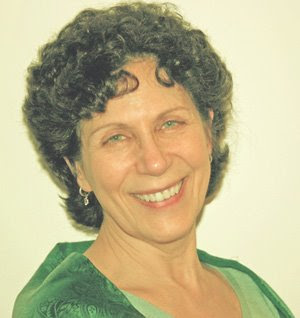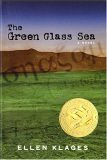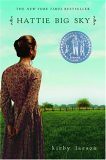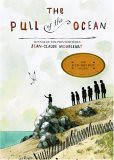My hope is that as you analyze your story inspiration flows...
When asked what was the most important element in her novels, Barbara Taylor Bradford said, "The character is the plot of the novel. Character is destiny. Your character is your destiny. My character is my destiny. And, with that, I knew how to write a novel."
In honor of anyone with energy waning, I congratulate you on what you've accomplished and offer the following as yet anyway to look at the Universal Story Form.
When I’m not helping writers with their plots, I volunteer at the local Children’s Shelter. Rather than let pain and betrayal sit and fester, I invite the kids to explore the universal story form as it plays out in their lives.
Birth sets us on a journey. Beginnings and endings, conflicts and challenges, friends and foes, crises and climaxes are all part of that journey.
Start with where you are right now. Write your way to where you wish to be.
Stories have at least four big scenes.
1) The End of the Beginning
By the time the counselors, kids, volunteers, and I all huddle inside the Shelter classroom, there is no place to escape. I break down stories to seventeen year-old boys who loom large and twelve-year-old girls who are already women.
I start with a focus on the Beginning. The beginning 1/4 of the story leads to a moment of no return, a moment when life shifts, when good turns bad or bad to worse, the end of all that has been—the End of the Beginning.
After the kids write the beginning of their stories, a girl with clear brown eyes writes that she wants more time with her dad. She dreams of playing baseball like him. At the End of the Beginning, her dad dies.
Another girl shows a mom in heaven remembering her beautiful little girls. The End of the Beginning is when the girls go live with an uncle with a belt.
Now, try it for yourself. Think about your life. Are you feeling frustrated? Bored? Challenged? Dissatisfied? Has an event taken place recently that makes what you want feel impossible to attain? What is the moment when things went wrong?
Focus as closely as you can to the now.
Now that you cannot go back to the way things were before that moment hit—write that. Describe what you want that you now think is out of your reach.
2) The Crisis
In stories, the event that marks the End of the Beginning thrusts the character out of their old world and into a new one. Thus, begins the Middle, which is 1/2 of the story. In real life, when one door closes, we, too, enter a new world, be it a new physical place or a new psychological state. This new world is where you have the chance to evolve and ultimately be transformed.
Unfamiliar with our new surroundings, we venture forth feeling like a fish out of water. Often afraid, we encounter obstacles that trip us up and cause us to falter. We stumble over hurdles.
Our resistance causes pain.
The kids write down three bumps that shake their main character to their core. Three things that stop them and interfere with their dreams. I advise the kids that we only find out whom we truly are when we are challenged. Adversity does not build character. Adversity reveals character.
Who and what have you gone up against lately? Who or what stands in the way of your happiness? Friends and family? Societal norms, handicaps, or you yourself? Do your fears and prejudices and flaws prevent you from achieving that which you long for? How do you sabotage yourself? Write that.
The challenges in the middle rise in intensity until something explodes at the Crisis.
The Crisis may have already happened in your life. The Crisis may be something you can see happening if you don’t take control of your own life. A Crisis is a deep disappointment, a blow that sends you to your knees, the dark night of the soul. The Crisis is a breakdown that has the potential to cause a break-through.
Write about something you are unable to do now. Consider what Crisis you must experience first to force you to move on, let go, detach, surrender, do things differently, believe in yourself.
What does the Crisis represent to you getting control of your own life? What you write about now, you may not have to experience later.
After her father’s death, the girl with liquid eyes writes about feelings of denial. She falls into depression. Next comes rage. She turns violent and is placed in a group home. Separated from all she knows and understands, she experiences a Crisis.
3) The Climax
In all great fiction, the main character undergoes a transformation. The dramatic action in the Middle and what happens at the Crisis changes everything. Once unconscious of whom they are, the character now becomes conscious.
Character transformation is a form of alchemy. Rather than metal turned into gold, challenges and disappointments transform into gifts and opportunities. The victim becomes the victor.
You, too, have the opportunity to be transformed by what happens in your life.
At the Shelter, I give examples of characters overcoming tremendous odds and showing, at the Climax, their transformed self. At the end of all great stories, the main character is able to do something they were unable to do at the beginning of the story. The same applies in life.
You have written about where you are. Consider where you would like to be. What must you shed to get there? What must you learn? As you move toward your ideal, you carry with you all you have learned. Your old self dissolves.
The Climax at the end of the story shows an action taken that demonstrates your new awareness, skill, strength, belief, and/or personal power. At the Climax, the new self is now able to confront antagonists and conquer challenges that the old self could not.
At the end of her story, the girl with the brown eyes faces the pain of losing her father. She learns to control her anger. This prepares her to confront her mother whom she blames for her father’s death.
Write a Climax that shows you facing your greatest fears. Imagine what that moment will feel like, taste and smell like, look and sound like. Describe yourself as a victor, a champion, a survivor, a body transformed and living the life you dream of. Dream big. Write that.
4) The Resolution
When someone real or imagined is transformed, the experience means something. Consider what you would like your life to stand for so far. Write that.
At the end of the day at the Shelter, the kids barely have time to explore what they want in life. Many of them will soon be too old for the system. The place that protects abandoned, abused and neglected kids will release them on their own. Will the glimpse they have in writing their stories help shape what comes next? One can only hope.
We talk about what stories mean overall: Good triumphs over evil (the girl with the belt). Self-control leads to happiness (the girl with the liquid brown eyes. In her story, her main character is ultimately reunited with her family. She joins a baseball team.)
Stories reflect the heartbeat of the universe. All of us pulse to this universal rhythm. The more integrated the hero’s journey in our psyches, the more satisfying the act of writing and the more meaningful life becomes.
The paradigm of endings causing new beginnings causing discomfort that builds to a crisis happens over and over again in stories. Our lives revolve in much the same way on both grand and minute scales.
Open your eyes after a Crisis. Wake up to the deeper meaning of life around you. Let go of attachments. Break free from anxiety. Determine what you really want. Rise up out of depression. Locate opportunities for transformation. Let go of disappointment. Expose your fear to the light.
Shine a light on your life through your writing. Awareness leads to the possibility of transformation.
Dream big.
Write that
 Begin pre-plotting your story for NaNoWriMo with the 1st exercise in The Plot Whisperer Workbook: Step-by-step Exercises to Help You Create Compelling Stories.
Begin pre-plotting your story for NaNoWriMo with the 1st exercise in The Plot Whisperer Workbook: Step-by-step Exercises to Help You Create Compelling Stories.











I guess I'm lucky that I always know how a story is going to end. :)